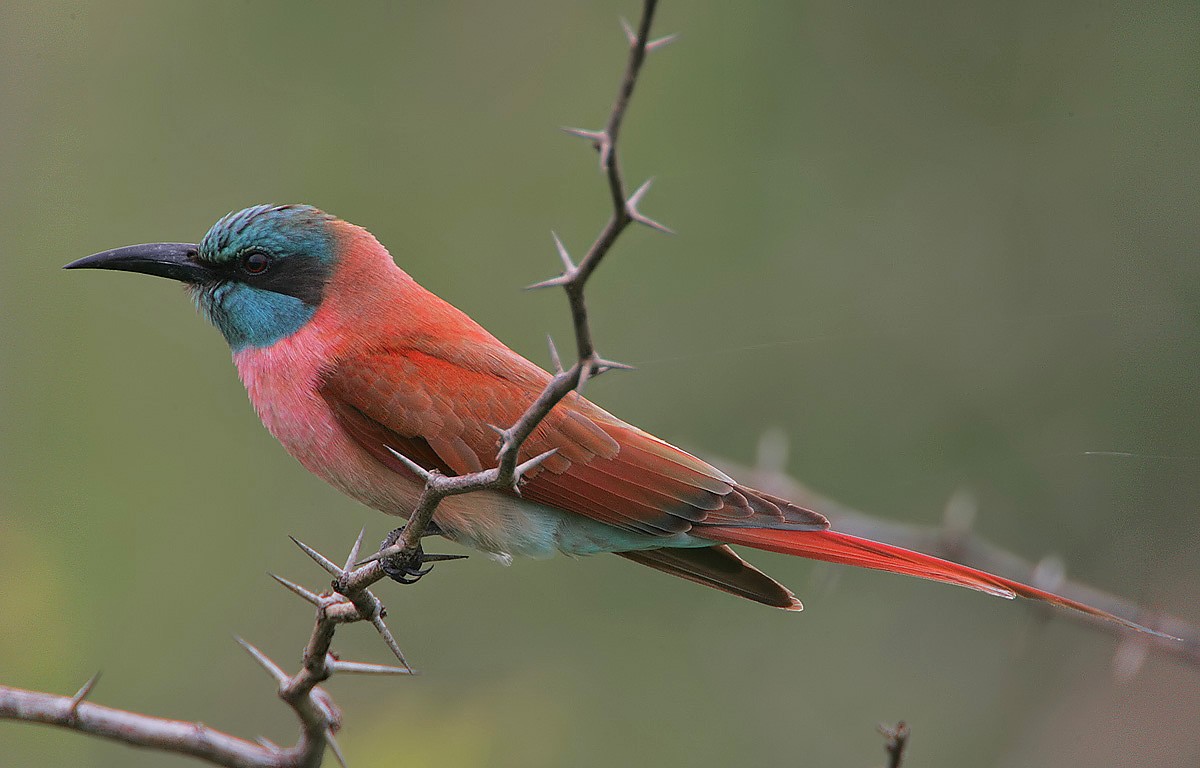Northern Carmine Bee-eater
A species of Typical Bee-eaters Scientific name : Merops nubicus Genus : Typical Bee-eaters
Northern Carmine Bee-eater, A species of Typical Bee-eaters
Botanical name: Merops nubicus
Genus: Typical Bee-eaters
Content
Description General Info
 Photo By Steve Garvie , used under CC-BY-SA-2.0 /Cropped and compressed from original
Photo By Steve Garvie , used under CC-BY-SA-2.0 /Cropped and compressed from original Description
This species, like other bee-eaters, is a richly colored, slender bird, predominantly carmine in color, except for a greenish blue head and throat and distinctive black mask. This species has red eyes, a black, pointed, decurved beak, and elongated central tail feathers. The sexes are similar in appearance, and the juveniles can be distinguished from adults by their lack of elongated central tail feathers and the pinkish brown coloration of their mantle, chest to belly, and flanks. 
Size
27 cm
Nest Placement
Burrow
Feeding Habits
Northern Carmine Bee-eater predominantly feeds on bees, flying ants, grasshoppers, and locusts. They exhibit characteristic hunt-from-perch behavior, capturing prey in mid-air with precision. This bird's dietary adaptation includes a preference for flying insects.
Habitat
The northern Carmine Bee-eater typically inhabits bushy and wooded savannas, as well as areas adjacent to bodies of water such as rivers, floodplains, swamps, lakeshores, and mangroves. This species is also found in human-modified landscapes, including pastoral fields, agricultural land interspersed with trees, and thornveld regions. The presence of large riverside cliffs is crucial for their nesting requirements.
Dite type
Insectivorous
General Info
Feeding Habits
Bird food type
Distribution Area
It is native to Benin, Burkina Faso, Cameroon, the Central African Republic, Chad, the Democratic Republic of the Congo, Côte d'Ivoire, Eritrea, Ethiopia, Gambia, Ghana, Guinea, Guinea-Bissau, Kenya, Liberia, Mali, Mauritania, Niger, Nigeria, Senegal, Sierra Leone, Somalia, Sudan, Tanzania, Togo and Uganda. It occurs as a vagrant in Burundi. Ian Smalley and his colleagues suggested that the distribution of the northern carmine bee-eater is tightly linked to the presence of secondary loess deposits throughout Africa. 
Species Status
Not globally threatened.
Scientific Classification
Phylum
Chordates Class
Birds Family
Bee-eaters Genus
Typical Bee-eaters Species
Northern Carmine Bee-eater